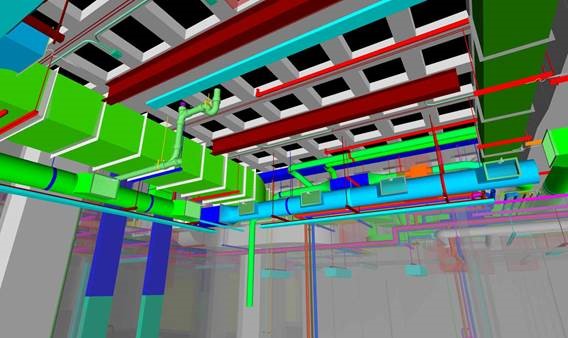Wharton-Smith has embraced the use of innovative technologies to provide more efficient workflows in the construction process. One such technology is Building Information Modeling (BIM), used to provide advanced coordination and collaboration during construction. BIM applications imitate the building process. Instead of creating two-dimensional (2D) drawings, buildings are modeled from construction elements such as walls, slabs, and roofs. This allows architects and engineers to design projects in the same way they would be built. Where in the past we might have used a light table to layer the drawings and identify conflicts, today we can create a realistic virtual model. This gives the decision makers the ability to see and communicate their ideas and solutions.
We can also add the fourth dimension of time to our drawings by showing the progress of the structure as it relates to the schedule. We call this Value Stream Production Planning in the Wharton-Smith Production System. Project leaders can see the work-zone and all of its physical limitations long before we send a crew out to the field. We also use Navisworks Manage, which allows us to bring in fabrication drawings from outside subcontractors, take a virtual tour, and holistically review the integrated model for clashes with all of the stakeholders. Most importantly, it’s the people behind the software that make the difference. We have a seasoned team of professionals in our Virtual Construction Department ready to bring a project to life.
Other technology tools in the Wharton-Smith construction toolbox include drones that give our clients first-hand visual progress, PlanGrid software which allows real-time coordination in the field, and FaceTime technology used to interact virtually with field inspectors. By utilizing these advanced technologies, we streamline our production processes and provide more efficient workflows for a productive jobsite.


